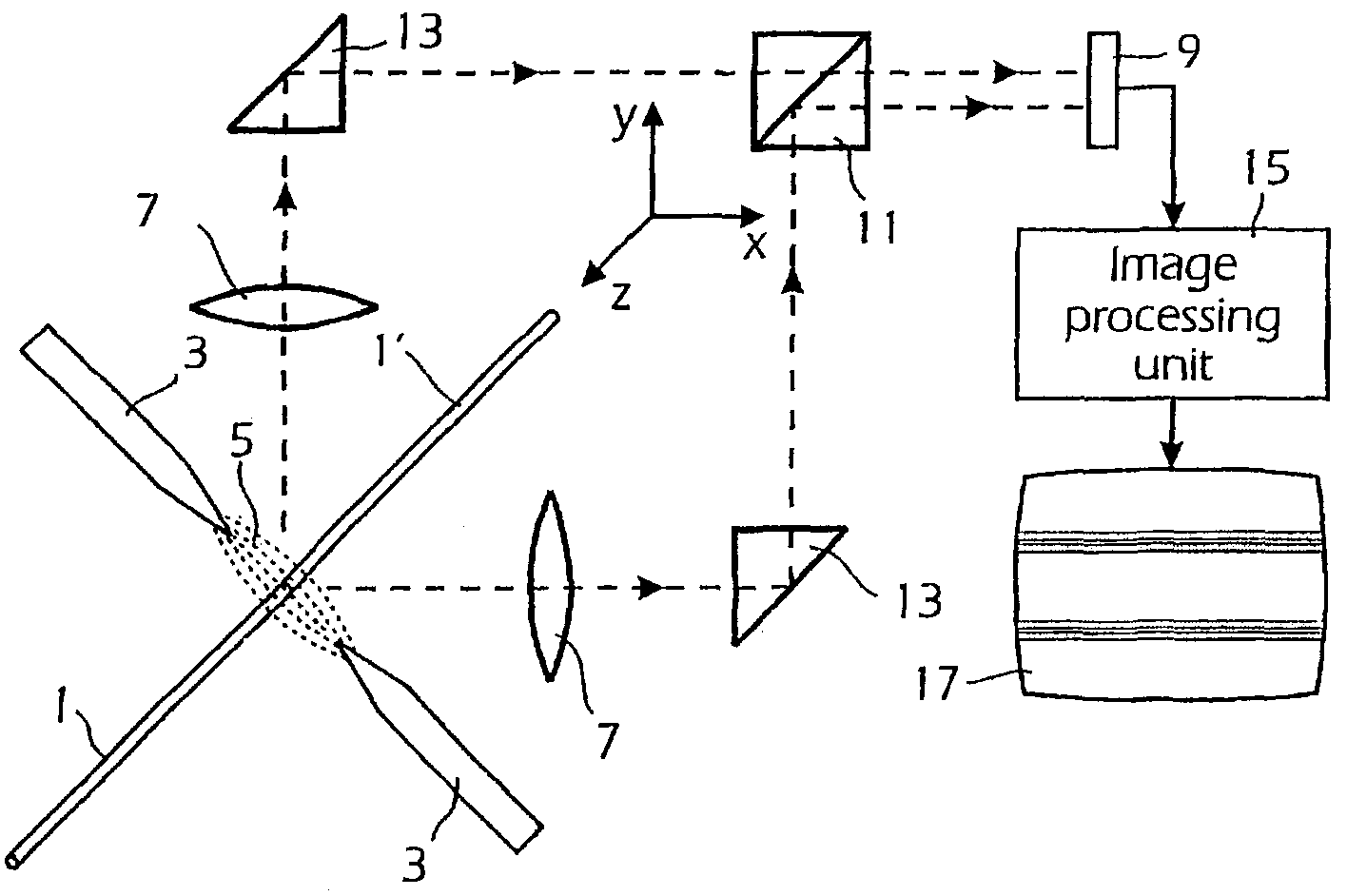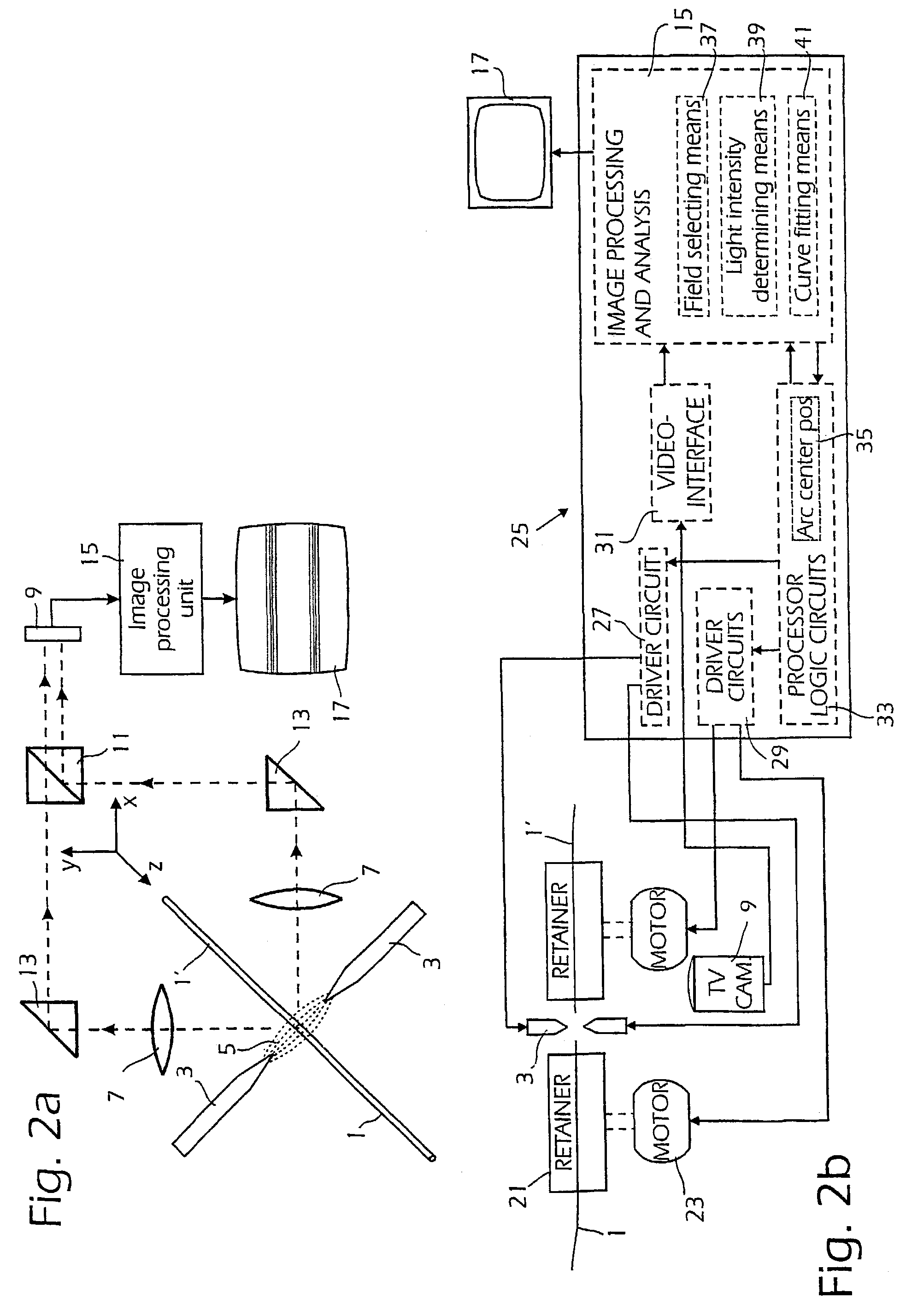Method of splicing optical fibers with arc imagining and recentering
a technology of optical fibers and arc imagining, applied in the field of splicing optical fibers, can solve the problems of high optical loss of bad splices, insufficient temperature control to handle the situation of large distances of arc-walk, etc., and achieve the effect of low splicing loss
- Summary
- Abstract
- Description
- Claims
- Application Information
AI Technical Summary
Benefits of technology
Problems solved by technology
Method used
Image
Examples
Embodiment Construction
[0017]In FIG. 2a the basic setup in an automatic optical fiber splicer is shown. The fibers 1, 1′ have their end regions located between points of electrodes 3, between which an electrical discharge 5 is generated for heating the fiber ends, the intensity of the electrical discharge being controlled by the intensity of the electrical current between the electrodes 3. An optical system symbolized by lenses 7 depicts, in two perpendicular directions, the fiber end regions on the light sensitive area 9 of a camera, e.g. a plate carrying CCD elements, the light from the perpendicular directions being deflected by mirrors 11 and combined in a light combining device or beam splitter 13. In most automatic fiber fusion splicers of this type a digital imaging processing system 15 is provided for processing the electric signals from the light sensitive area9 and thereby to monitor the fibers used and the splicing procedure by controlling fiber positioning devices and the intensity of the elec...
PUM
| Property | Measurement | Unit |
|---|---|---|
| temperature | aaaaa | aaaaa |
| temperature | aaaaa | aaaaa |
| core diameter | aaaaa | aaaaa |
Abstract
Description
Claims
Application Information
 Login to View More
Login to View More - R&D
- Intellectual Property
- Life Sciences
- Materials
- Tech Scout
- Unparalleled Data Quality
- Higher Quality Content
- 60% Fewer Hallucinations
Browse by: Latest US Patents, China's latest patents, Technical Efficacy Thesaurus, Application Domain, Technology Topic, Popular Technical Reports.
© 2025 PatSnap. All rights reserved.Legal|Privacy policy|Modern Slavery Act Transparency Statement|Sitemap|About US| Contact US: help@patsnap.com



